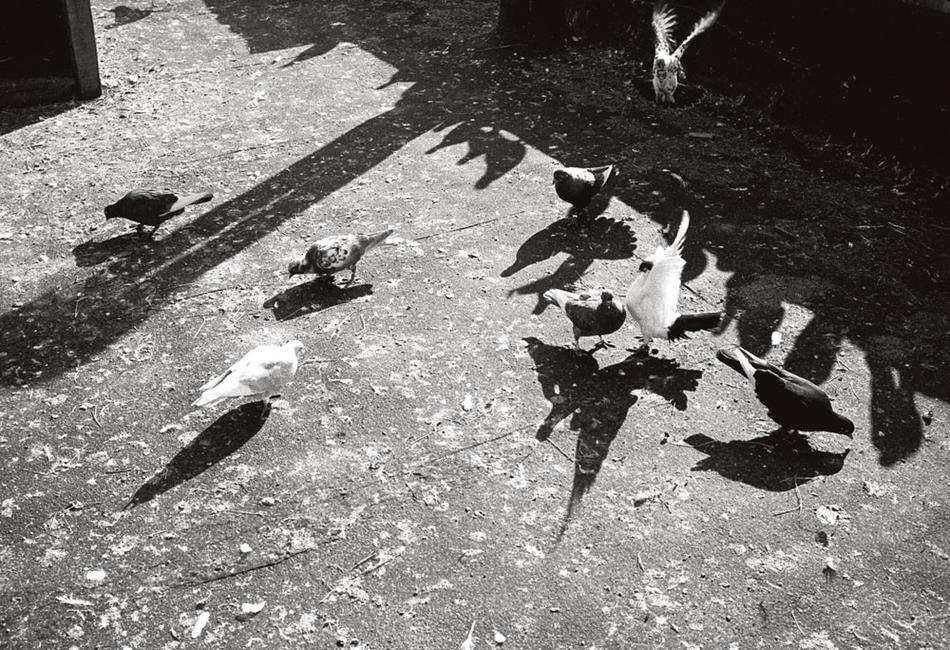If nothing else had led to the phrases “familiarity breeds contempt” and “absence makes the heart grow fonder,” pigeons would have.
Sharing with Homo sapiens a tendency to congregate in cities, Columba livia does so in such profusion and with such insouciance about waste disposal that its most immediate neighbors commonly call its members “winged rats.”
But away from the squares and buildings that might appear to a Martian anthropologist to be built as public conveniences for pigeons, most of us can take these birds or leave them.
Andrew D. Blechman ’93JRN writes on the people who take them: those for whom familiarity with pigeons breeds fondness. One of the heroes of Blechman’s account is Orlando Martinez, a Brooklyn pigeon racer who hopes to win the Main Event — the Kentucky Derby of pigeon racing. A fortuitous encounter with Orlando’s brother, José, at a corner bodega introduced Blechman to what would be the subject of his first book. Heretofore, Blechman reported on city goings-on for The Los Angeles Times and Des Moines Register and regarded pigeons as scruffy nuisances “that crap all over the city’s buildings.” Yet Blechman was so impressed by José’s admiration for his brother that he journeyed the very next day to meet Orlando, a man for whom life is not much more than a support function for his engagement with pigeons.
Blechman also presents the historical case for pigeons, which begins with Noah, for a dove is no more than a pigeon toward whom one feels kindly. (If a pigeon wants to make the rank of dove, it helps to be all white, but as a matter of fact, all pigeons are entitled to be called doves, and all doves must risk being called pigeons.) The record then traverses the military and civilian role of pigeons as an essential telecommunication device.
The urban pigeon is feral, descended from formerly domesticated birds that struck out on their own to avoid the dinner plate or messenger service. Although contemporary pigeons are the successors of European imports, North America once had an indigenous dove, the passenger pigeon. (The name alludes to its migratory behavior: C. livia does not migrate, being supremely adaptable wherever it finds itself.) Before the shotgun reached our shores, passenger pigeons were the most numerous bird on the globe, with a population estimated at five billion. Their migrations darkened the sky. And they made wonderful targets, so were hunted town with prodigal efficiency. Martha, the last of her race, died in the Cincinnati Zoo on September 1, 1914.
Extant pigeons fall into two broad populations: the ferals in the square, fancied by comparatively few, and the redomesticated birds prized as racers, delicacies, or simple objects of virtu.
The common pigeon, which walks about in a nodding bob that leads one to doubt its mental health, is, when bred for the purpose, the supreme athlete of the air. It can fly at 60 m.p.h. for 500 miles nonstop and can find its way home from a place it has never seen before. These muscular and navigational feats are in themselves enough to explain the pigeon-lovers among us, but as Blechman found, they are a diverse lot. Those who breed pigeons as racers include Queen Elizabeth II.
Some people breed pigeons — known as rollers — to provide aerial shows rather like nonpredatory hawks. Mike Tyson, a lifelong enthusiast, is one of these. Blechman tried long and hard and unsuccessfully to interview the pugilist, who, after his humiliating upset by Kevin McBride, reportedly said that “he just wants to go home and be with his pigeons.”
Others breed pigeons for show, reversing the indiscriminate breeding that has made the common pigeon more common around the world than McDonald’s. Some prefer pigeons on the plate, and still others in their gun sights, blasting them out of the air while ignoring the dead and dying pigeons on the grass, alas. These sportsmen, who disdain the more predictable and therefore less challenging clay species launched from a spring-loaded trap, are concentrated in the legally complacent state of Pennsylvania. (Blechman’s pity for these shooters is well modulated and rightly proportional to his sympathy for their victims. No PETAist, he.)
At the other end of the compassion scale are those who treat pigeons as objects of philanthropy and move about the city feeding them with abandon. Blechman even encountered one expert in humane methods of pigeon control who had turned his home into what amounts to a pigeon loft.
Blechman’s forte clearly is in his character studies of these and other pigeon enthusiasts. His account of the historical pigeon, on the other hand, is a bit mottled by his lack of footnotes or bibliography. One can neither check up on details nor expand one’s knowledge. The engaged reader, of course, wants to do both.
Even so, Blechman has provided a richly instructive and delightful panorama of our diverse relations with a bird that, while not everyone’s pigeon, is certainly the fancy of many.



